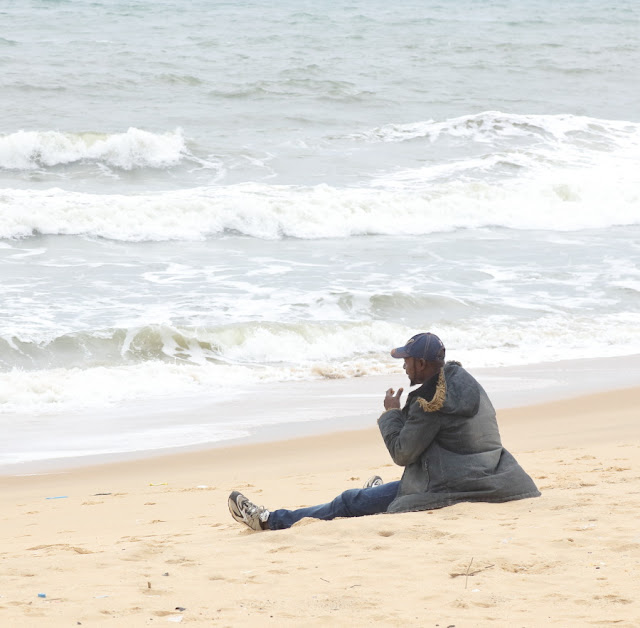 |
| selling snacks and contemplating the sea |
Eleko beach is located on the Lekki peninsula, half an hour away from Lagos Islands. The access is controlled by area boys who are asking for a standard fee of 500 naira per person (visitors) but if you are asking for a receipt you can actually spend much less because then the money goes directly in pocket of the recipient (and perhaps a few other guys who are more senior). One side of the beach is where every goes and the other side is dedicated to beach huts set on a small pieces of land facing the ocean. The huts are on stilts.
 |
| sea and shipwreck, should we stay or should we go? |
The one we visited belonged to someone we did not know but the one looking after was happy to rent it for a fee to us. He organised a barbecue with a few fishes, not so big but fresh from the sea.
The beach itself was fairly empty, if not for all the plastic wastes. A sea of shoes remains mingling with all sorts of plastic bottles, etc... Curiously some plants managed to grow timidly through the garbage. Nature is by nature optimistic. It is adapting to the local environment.
Some artefacts sellers came by, posted for the afternoon. Girls on the beach were carrying plateaus on their head with some snacks for sale.
 |
| fresh fish but already eaten |
One man dressed in a thick jacket was enjoying his joint sat on the sand facing the ocean. Probably a motorbike driver. And yes it was cold by local standards, perhaps only 27 degrees celsius.
 |
| peace and warmth |




Comments
Post a Comment